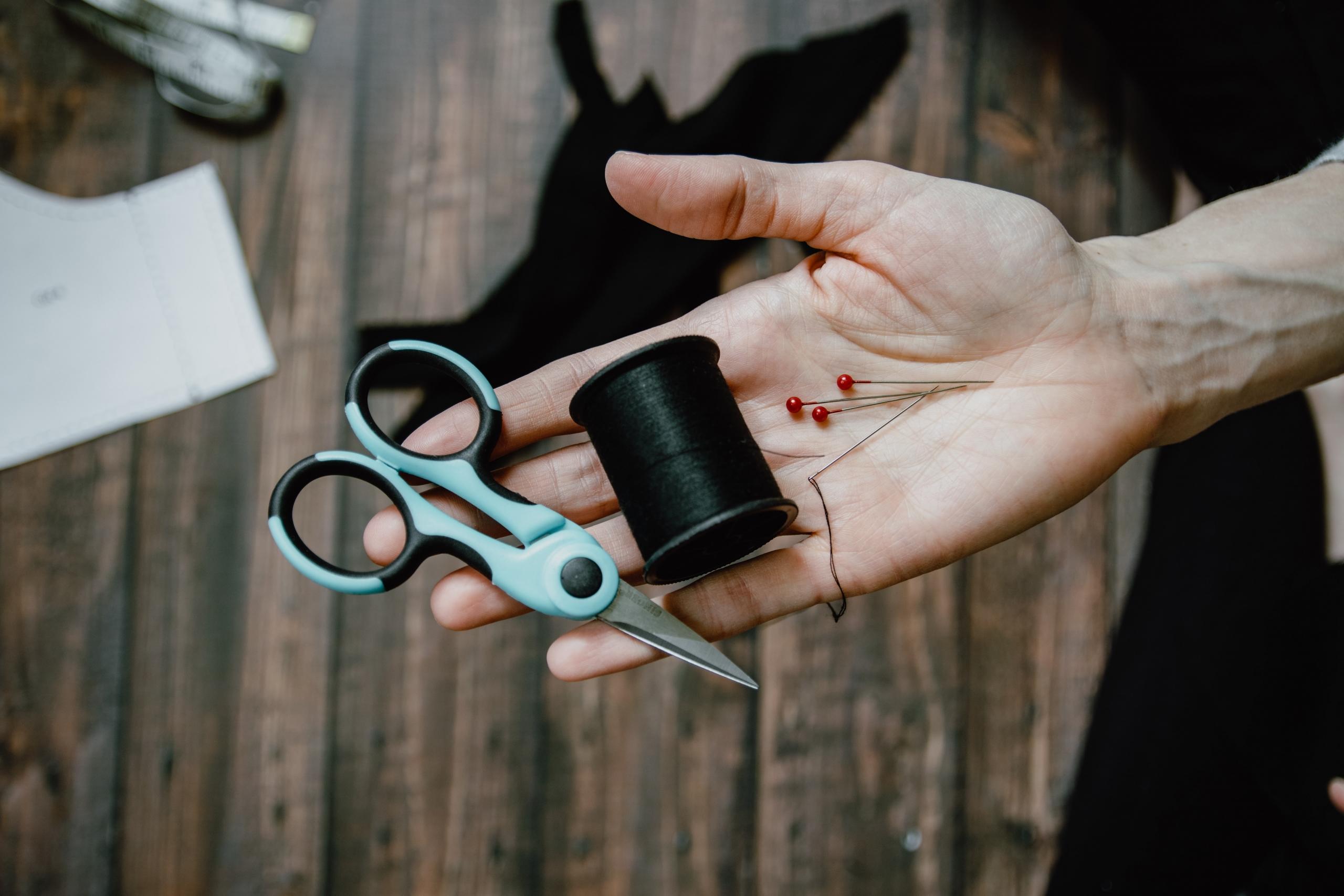If you have decided to take your sewing hobby to another level, you are probably considering a sewing room. Tracing sewing's long historical line reveals that this craft only required a needle, thread, and scissors. But, as technology evolved and demand for fashionable clothing grew, people clamoured for dedicated sewing rooms within their living spaces. Creating a space to keep your sewing projects organised should include these elements:
| 👗 Aspect | 🤔 Why it's important | 🔎 What to look for |
|---|---|---|
| Storage | To keep your space uncluttered. To keep your supplies and equipment organised. | An assortment of shelves, cubbies and cabinets that don't clutter your space or block the light. Thread storage systems, larger storage bins for cloth, smaller 'project boxes' for buttons and other notions. |
| Lighting | To examine tiny stitching. To gauge your work's effects under various lighting conditions. | Natural light is best, in general. Targeted lighting over your workspace, if possible. The quality of light: unforgiving LED bulbs versus filtered light, for example. |
| Furniture | To support and enable your work. To prevent musculoskeletal injury. | Tables to lay out and measure fabrics. Ergonomic work chairs. Multipurpose work stations (credenzas, desks with drawers, etc) |
| Equipment | You must have the proper tools and supplies to work efficiently. | Sewing machines: single needle, multiple needle. Dressmaker's dummy. Steamer, iron and ironing board. |
| Personalisation | To make your space attractive, inspiring, and productive. | Idea boards to map your projects. Inspirational boards for future projects. A sound system. A 'break corner' to sit back and survey your work. |

Craft Room Storage Solutions
As your sewing ambitions grow, you will need more fabric, equipment, and supplies. Storing it all will become a hassle unless you opt early on for organisation. There is no magic bullet solution for turning all that fabric into a neatly organised, easily accessible resource. But, depending on your space and preferences, you have options.
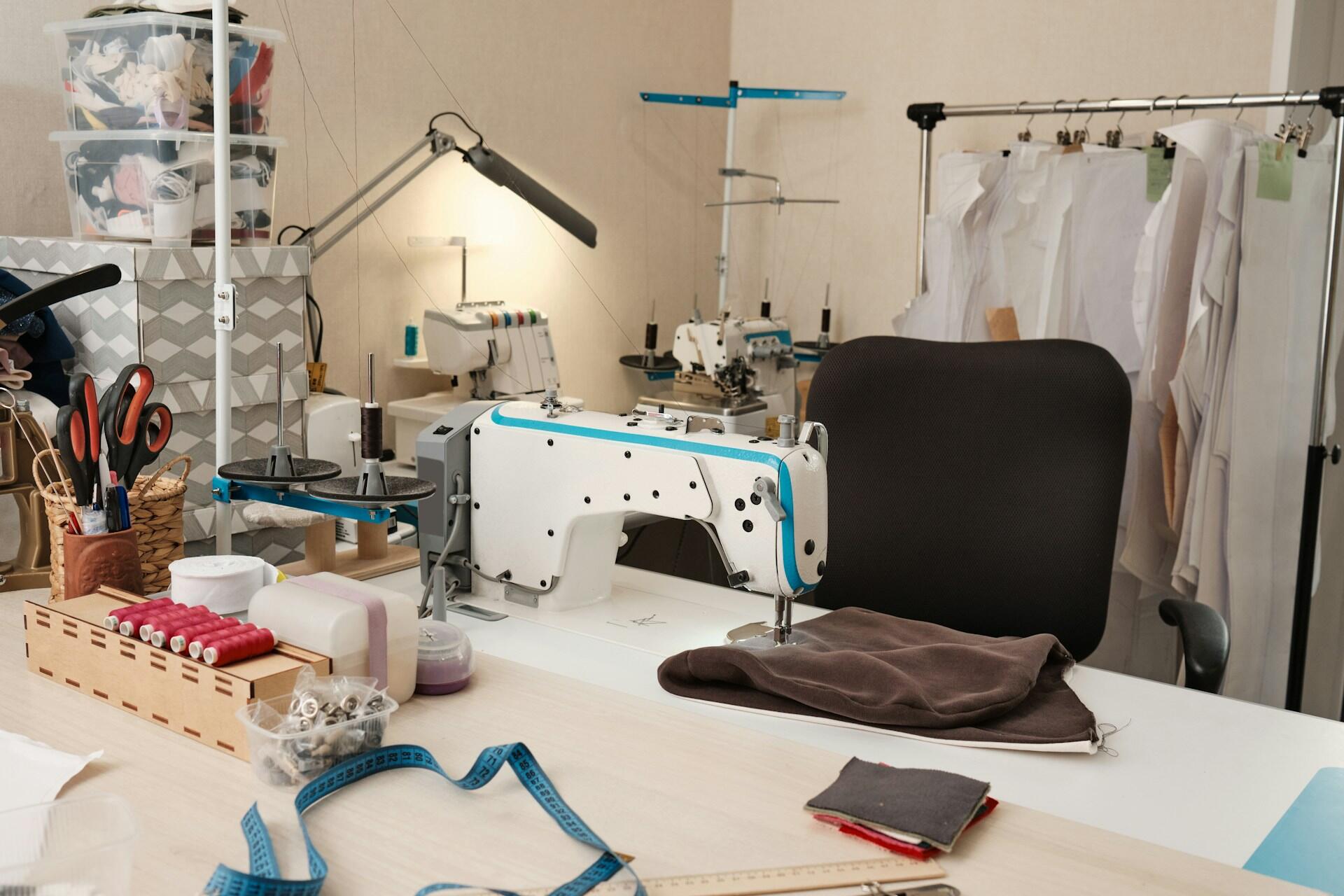
Customizable Storage
Today, we have so many options for modular storage, ranging from shelves with pull-out basket drawers to stackable transparent bins.
The best part about these home storage solutions is that you can add components you need when you need them. You don't have to buy an entire unit at once.
Buying modular storage as needed saves you money in two ways.
1. You only spend on what you need in that moment.
2. You're not tempted to buy more sewing materials to fill empty shelves.
Whether it's a garment rack for hanging lengths of fabric or shallow drawers for stashing scraps and notions, going modular is an effective storage solution.
The Open Shelf Technique
If you don't have floor space for cabinets or boxes, try folding your fabrics and keeping them in easy view on open shelves. This keeps them off the ground and out of bins, ready for the moment you want to use them.
Shelving offers less protection from dust and light.
Store delicate or expensive fabrics elsewhere to keep them safe from dust or damage.
Filing Your Fabric
A popular way to get small pieces of fabric out of the way is by using hanging files to hold neatly pressed and folded fabrics. You can store them in a filing cabinet, or even in plastic or cardboard filing boxes.
Storing Notions
Used to be, mum's sewing basket contained everything: buttons, hooks and snaps; pins and pincushions, needles and spools of thread. Fabric scraps, nippers and shears and measuring tapes. All in one big, jumbled mess or, at best, in assorted etuis.
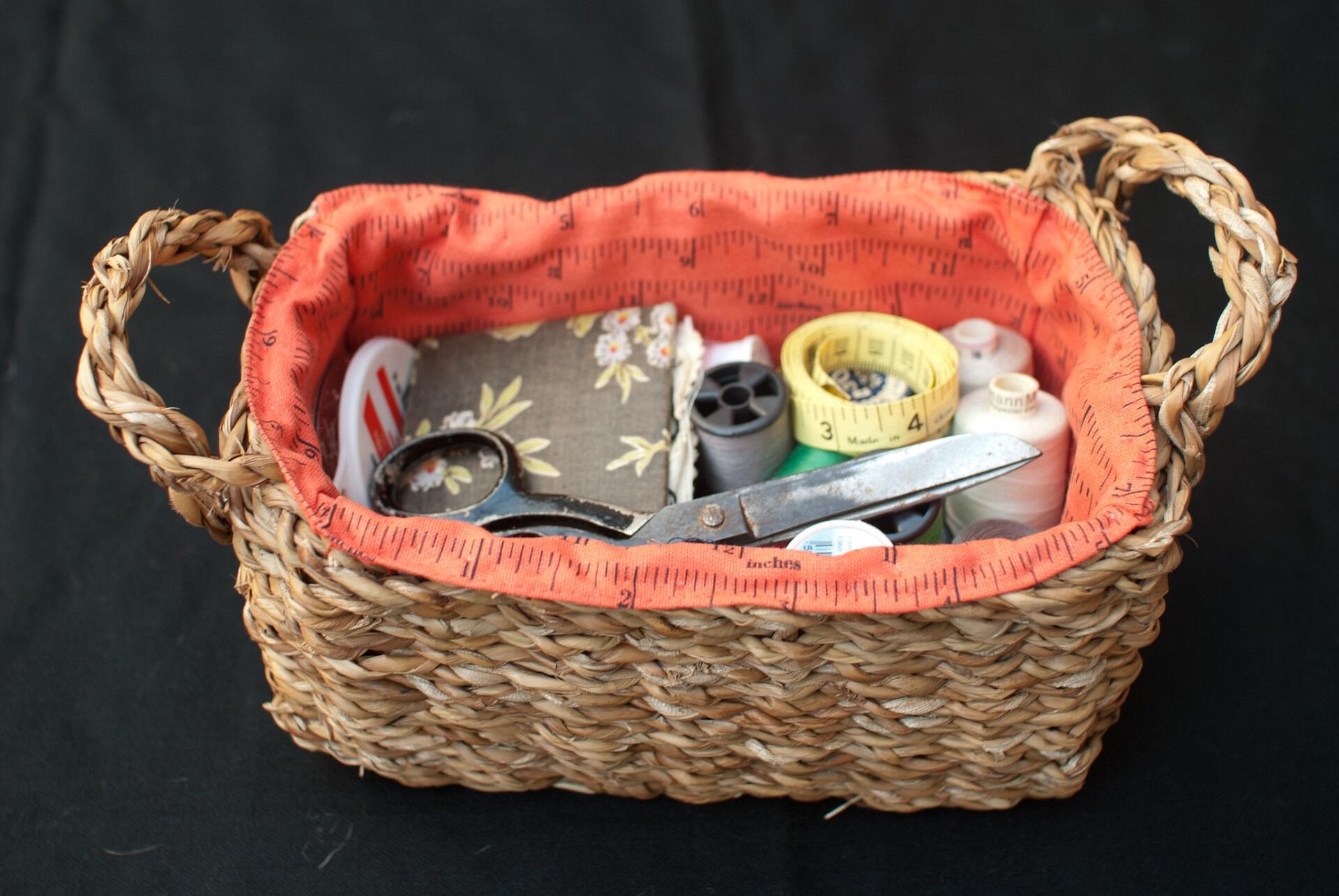
Today, we have see-through boxes with compartments to separate buttons, hooks, and snaps. A small, flat drawer is perfect for needles and pins, and a spool rack - wall-mounted or on a shelf, organises our thread. A pencil case or cup can keep our marking tools and measuring devices easily accessible. With these solutions, gone are the jumbled messes of days past!
Sewing Room Ideas for Lighting
Long gone are the days of people going blind from the eye strain of sewing by candlelight or in dim rooms. Today, we have a range of lighting options to brighten our spaces. In a sewing room, lighting is a critical aspect.
Natural Light
Diffuse natural light is ideal for sewing by hand and crafting. Granted, strong sunlight can bleach colours and damage fabrics, and a too-dim space is hard on your eyes. However, a soft overall glow is just right to create an inviting workspace. It's also essential to gauge how your creations will look when you wear them outside.
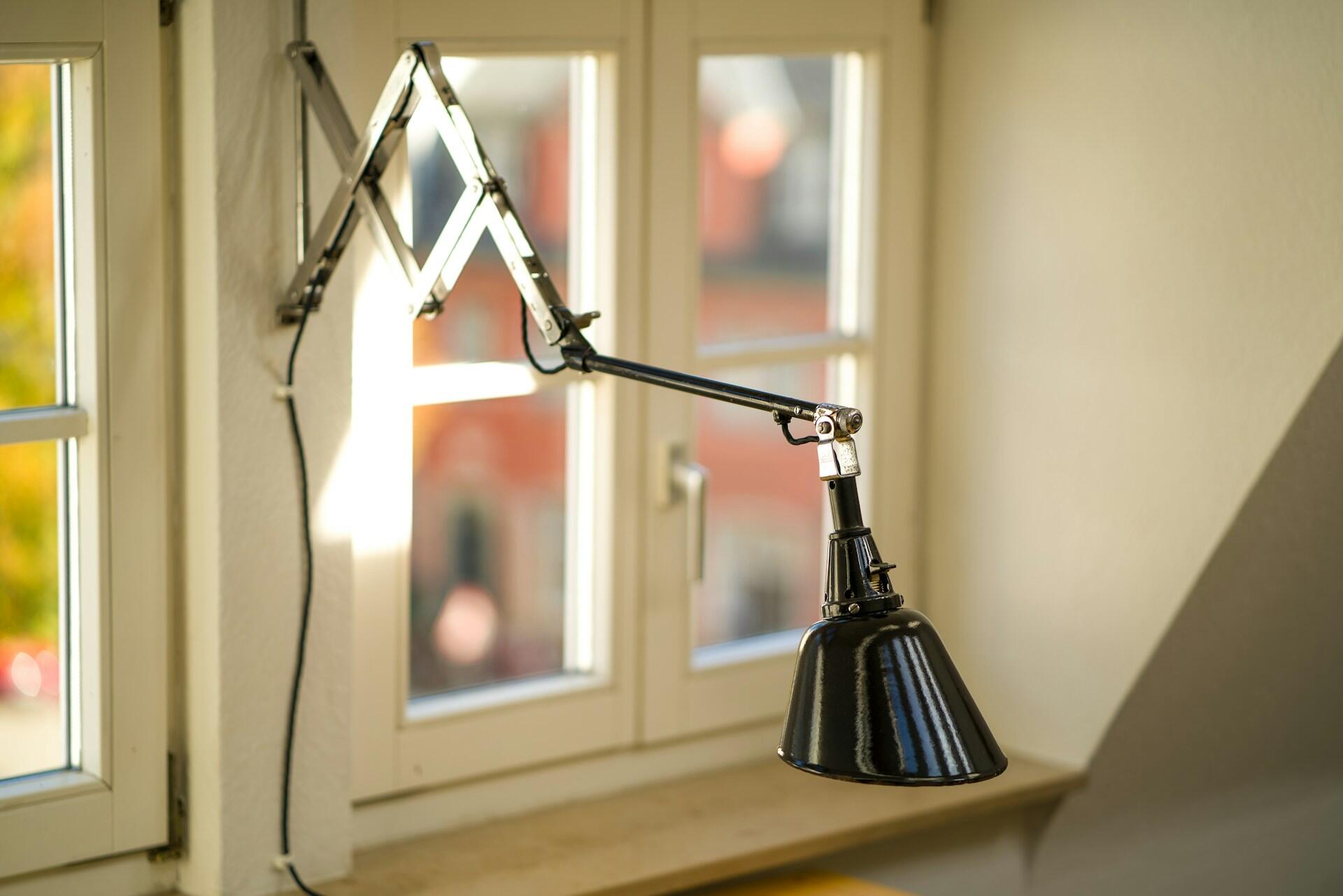
Targeted Lighting
Use task lighting for close-up work, but try to avoid harsh directional light that can cause unappealing shadows and make sewing difficult or tiring.
Hours of work in harsh lighting conditions can lead to dry eyes, blurry vision, and headaches.
At worst, it may cause eye diseases: cataracts and macular degeneration.
Such lighting also causes neurological strain, especially with long, repeated exposure.
Choosing the Right Light Effect
Money-saving light-emitting diode (LED) fixtures are apparently all the rage, these days. But, as the warning above reveals. Saving a few pennies isn't worth your eyesight or mental health. For optimal lighting conditions in every corner of your sewing room, try these bulbs, instead:.
Daylight bulbs
- mimic natural sunlight
- allow accurate colour perception
- available in different lumens (levels of brightness)
Compact fluorescent bulbs
- ideal for overall lighting
- a close match for daylight bulbs
- more cost-effective than specialised bulbs
Ott-Lite bulbs
- enhance colour perception
- reduce eye strain
- made especially for crafting
- can be expensive
With all that said, we confess that LED spot-lighting isn't all bad. If you care to invest a bit more, you can get LED lights with adjustable colour temperatures. Those will be more expensive, but worth the extra if it means eye protection and heightened productivity.

Sewing Room Furniture
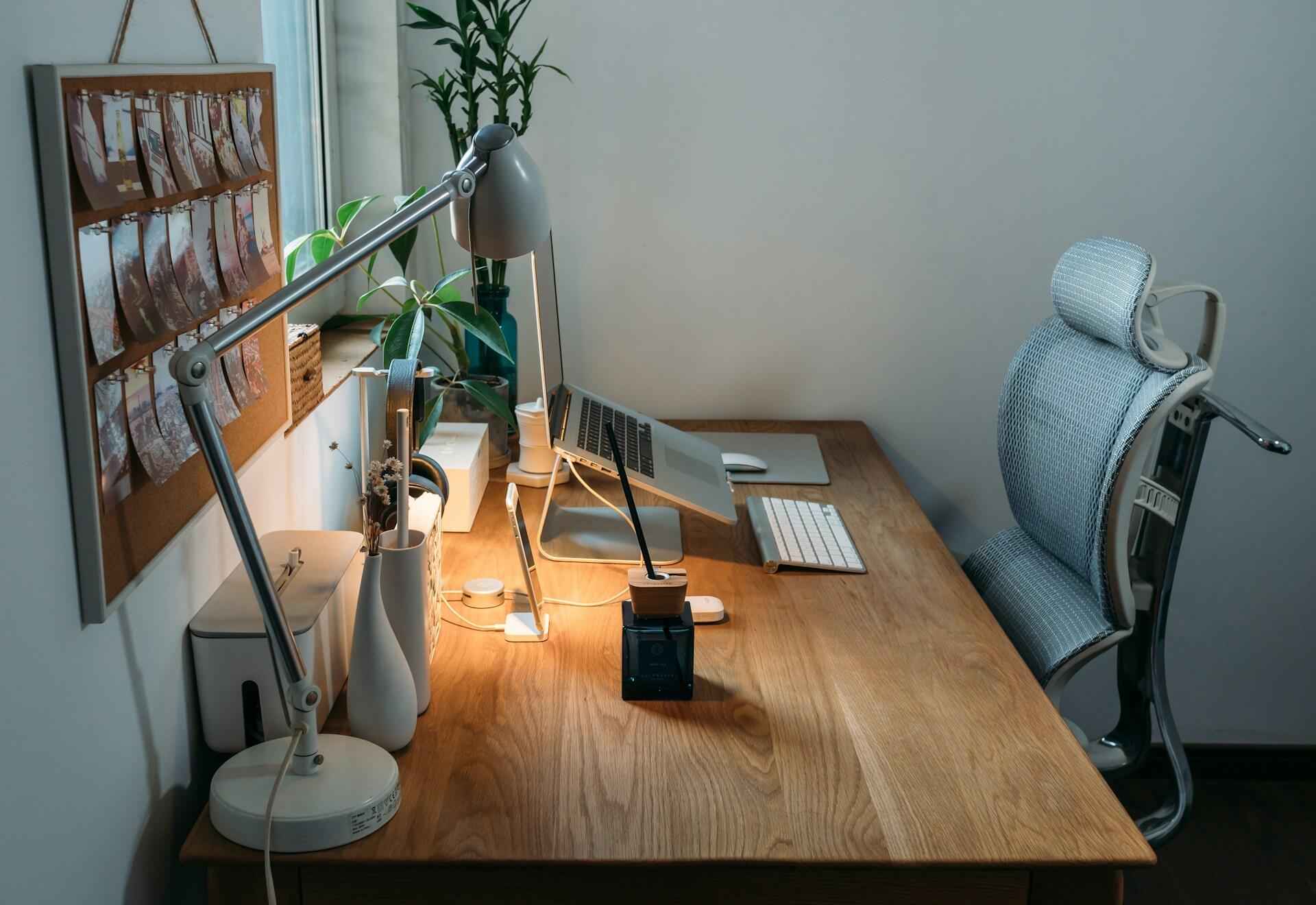
There's no sense in having a specially designed sewing room while still using uncomfortable kitchen chairs to sit on. An adjustable office chair will provide support and help you stay comfortable during marathon stitching sessions.
Your work chair is a prime consideration but, once you have seating sorted, you must consider other pieces to fill your space.
Sewing Table
Your work table is as important as the equipment it supports: your sewing machine and other equipment. Standard tables aren't sturdy enough to support a sewing machine, which might cause your machine to wobble or bounce as you sew.
Standard tables are too high to sew comfortably with the machine deck's added height.
Specially-built drop-in tables are ideal since they allow the deck of your machine to sit level with the rest of the table's surface. Some of these sewing tables come with fold-out extensions for sewing large pieces, and can double as cutting tables.
Cutting Table
A sturdy, sizeable cutting table is an absolute must!
Crouching over your fabric to cut it can hurt your back and damage the fabric. You also risk making bad cuts.
Your kitchen table might not be big enough, and clearing it off is time consuming and bothersome.
If you don't have room for a full-sized cutting table, consider a drop-down table to save space while still having a good working surface.
Sewing Room Organisation: Organising Tools and Materials
Beyond tables and storage systems described above, you have more craft room storage solutions to consider.
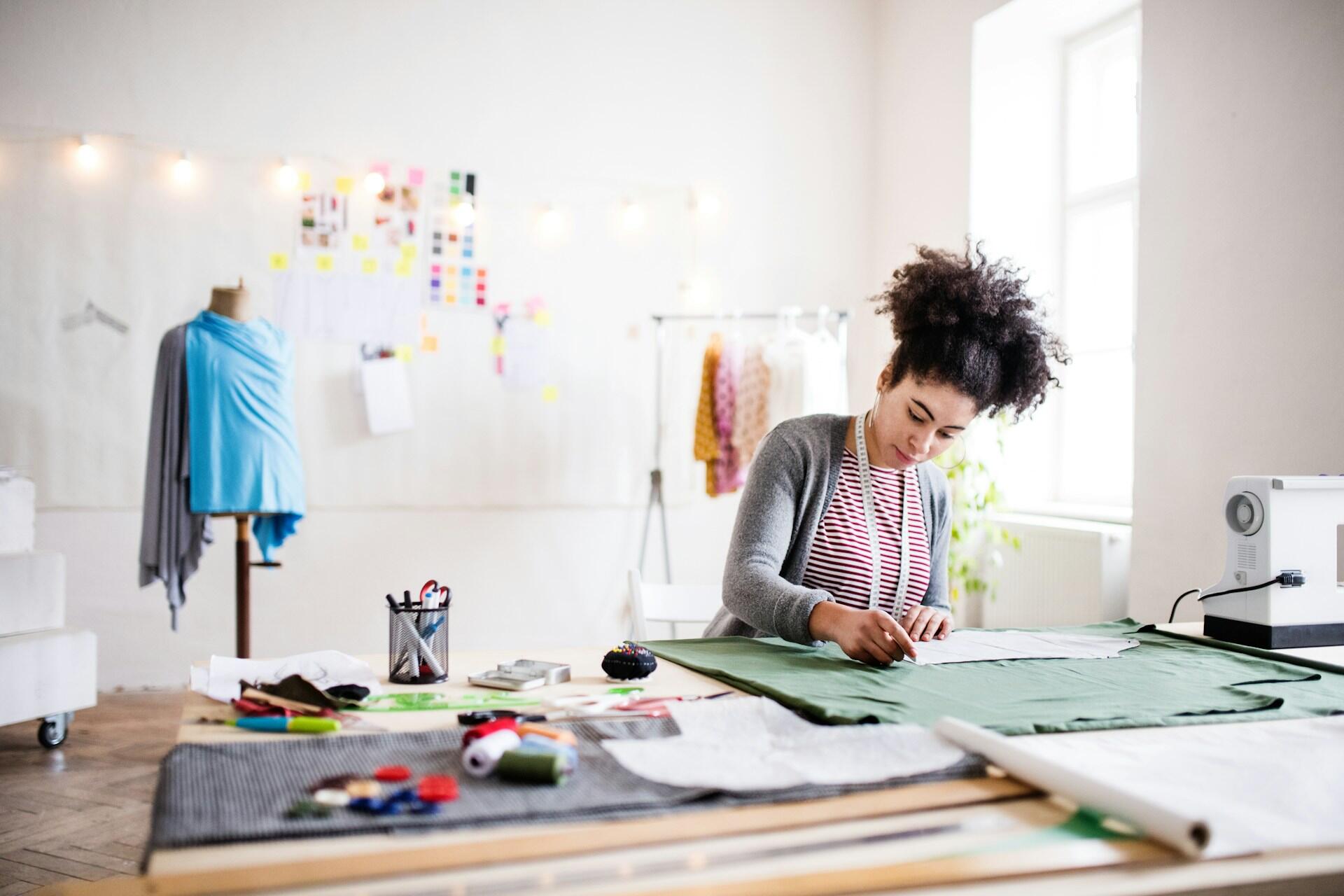
Pressing Space
Proper pressing can mean the difference between a sharp, crisp fit and a misshapen seam. Having a designated a place for your iron and ironing board means you'll be ready to iron as you work.
Pattern Files
Many people like to create garments from patterns, and quite a few have a collection of patterns in their sewing rooms. Follow these steps to store them efficiently:
- gather all the related pattern pieces
- mark modifications or unlabelled pieces
- fold each pattern carefully
- store each in its own zip-top bag
- label the bag with the pattern, brand and number, the sizing, and any modifications
- sort them by type - dresses, jackets, slacks and so on
- store them by type in plastic bins, drawers or cabinets
Reference and Research Section
Wouldn't it be nice to have all your sewing references right at your fingertips? Today, we get lots of inspiration from websites and social media, but sometimes it's best to have reference book.
You can print blog posts for ideas you want to try and pictures of garments you plan to make. Designate a shelf or two to keep all your references close at hand.
Your sewing machine user's manual can help you solve problems your machine has.
It likely also has a 'best practices' section to get the most out of your sewing projects.
A Creative Sewing Space: Adding Personal Touches
Idea Boards are a Pinterest favourite and a great idea, as they are they aesthetically appealing. They're also a great way to compare fabrics' colours and textures side-by-side, under changing light. You can add reference images, measurement sheets, and other project-related information to keep everything all in one place.
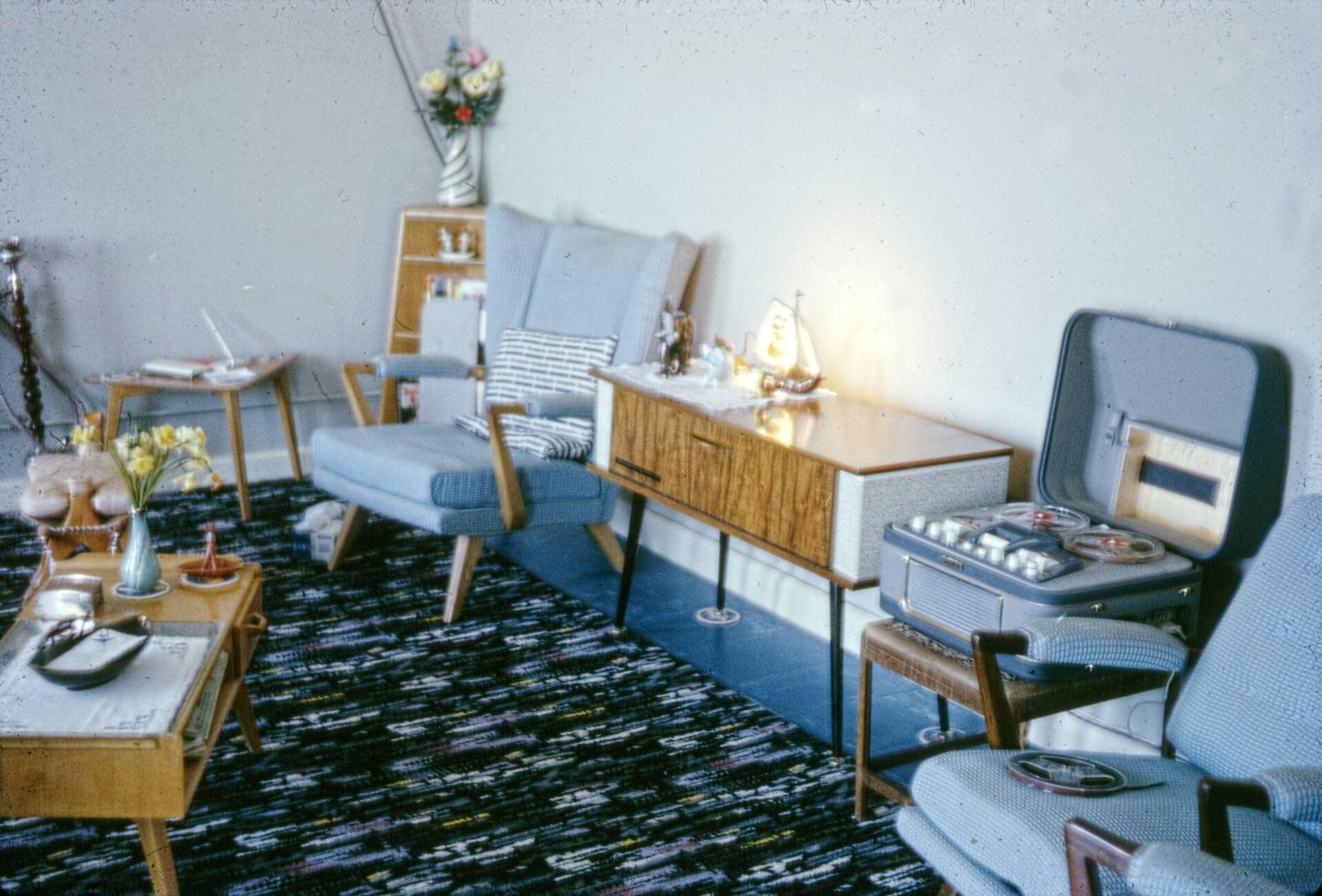
Mirrors
A full-length mirror is a must if you do any kind of fitting or garment work. Two are even better, and a fold-out trio is the best of all.
These fold-out mirrors give the viewer a look at how the back of their garments wear.
Even if you don't sew clothing, it doesn't hurt to have a mirrors around your sewing space. They bounce light around and give the illusion of a larger, brighter space.
Calendar
If you've ever struggled to finish a project under deadline, you know how important marking time is.
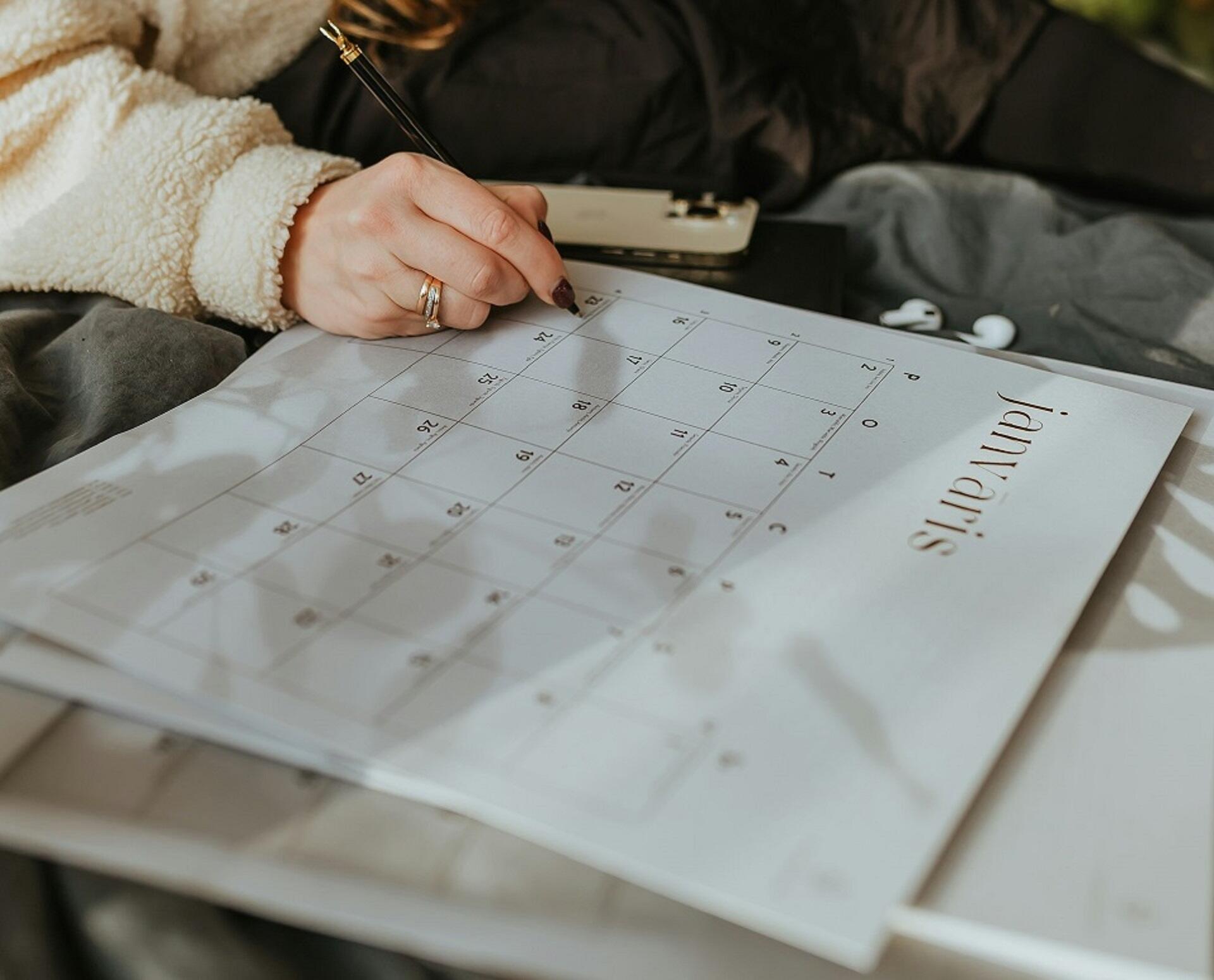
Having a calendar helps to remind you when a client's alterations need to be finished. Maybe you don't sew for clients, but need to remember the date of a baby shower you're making a quilt for.
Keeping track of time and organising your space can help you plan ahead and avoid the last-minute stress of getting things done.
It might take time to find your ideal setup and organisation style, but you can start by adding different elements and essentials to your sewing room. After that, you will be all set and ready to start different projects and sewing styles!

